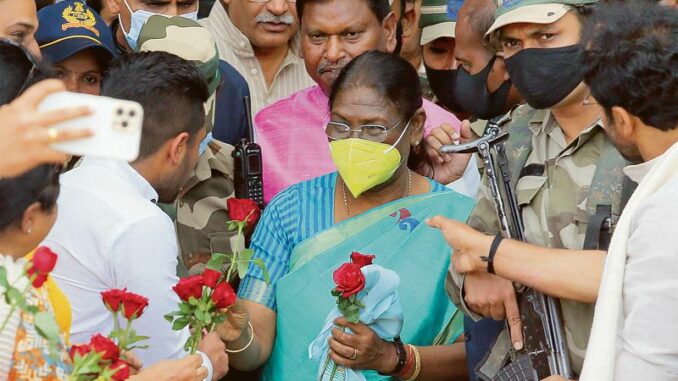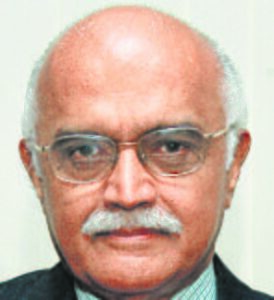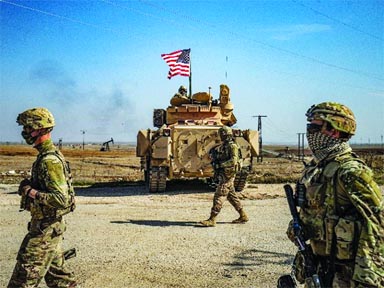
“The report observes that the ‘development paradigm’ has aggravated the difficulties of the ‘marginalized’ as the benefits have been ‘disproportionately cornered by the dominant sections at the expense of the poor, who have borne most of the costs.’ In the case of the ‘tribes’, it resulted in their loss of cultural identity, destruction of their resource base and made them increasingly vulnerable to exploitation and daily violence.”

It is very unfair to link the election of President Droupadi Murmu with the anticipated future electoral gains of the BJP, as some commentators have done. They had cried hosanna to the BJP leadership for flummoxing the Opposition by selecting the ‘first tribal’ and ‘second woman’ as the presidential candidate. This is not the way to hail the election of such a remarkable lady from a backward region who has braved personal and social difficulties to reach this high office. And, that too, at a time when India has slipped from 112 to 140 among 156 countries on the 2021 Global Gender Gap index compiled by the World Economic Forum (WEF), which conducts the annual Davos Conference. In Asia, only Pakistan and Afghanistan are behind India. The WEF attributed this slippage to inadequate political and economic woman empowerment in India.
Those opposed to the linking of electoral factors with her selection say that the new President would not be able to make much personal contribution for solving the deep-rooted problems faced by tribals or undo the wrongs done to them over centuries. This is because of the limitations built into her high constitutional position. Also, hyperbole or symbolic steps do not result in solving such underlying problems. This is true if history is any indication. An important milestone in their journey to correct these wrongs came in 1946 when attempts were made while drafting our Constitution on the eve of Independence. On December 11, 1946, Dr Rajendra Prasad, Chairman of the Constituent Assembly, introduced Jaipal Singh Munda as the “representative of the aboriginal tribes of Chhota Nagpur”.
In the Assembly records, Munda mentioned his religion as ‘Adibasi’ and caste as ‘nil’ as opposed to the others, including Jawaharlal Nehru, who wrote religion ‘Hindu’ and caste ‘Brahmin’. The only other representative who recorded as ‘Adibasi’ was L Sahu from Orissa. Their presence gave voice to that underprivileged section of our society in the Constitution-making body which gave special protection to them. Munda said that the dispossession of Adivasis did not begin with the arrival of the British, nor would it end with their departure. He said that “for the real rehabilitation and resettlement of the original people of India”, it was necessary that not only the British should quit, but also the others who had been exploiting and dispossessing Adivasis for thousands of years.
However, subsequent events would prove that independent India was not able to achieve even a modicum of reforms in this direction. Whatever we had attempted was diluted by political crosscurrents generated by upper classes, leading to frustration among this section, numbering 10.43 crore (8.6 per cent of our population) and divided among 705 notified tribes.
On the other hand, there is an increasing tendency by the government to treat such frustrations as ‘law and order’ problems during which the ‘dispossessed’ become the ‘accused’. The second milestone in their quest for justice came on January 5, 2011 when the Supreme Court (SC) sharply criticized the ‘historical injustice’ done to the tribals by the governance system and how these protections were not implemented even by a high court. This was during the SC verdict overturning an Aurangabad (Maharashtra) High Court’s acquittal of accused persons on technical grounds in which a young Bhil woman was stripped naked and beaten publicly. The SC also said: “Despite this horrible oppression on them, the tribals of India have generally (though not invariably) retained a higher level of ethics than the non-tribals in our country.” We have produced thousands of official pages on what needs to be done to improve the situation. However, no government has sincerely implemented the reforms suggested. One such good report is that of 2008, titled ‘Development Challenges in Extremist Affected Areas’. It is the result of the deliberations by a 16-member ‘expert group’ convened by D Bandopadhayay, which was constituted by the now defunct Planning Commission. The report covered not only the problems of Adivasis but also of Dalits and women in the vast landscape of land reforms, access to basic resources, forests, common property resources, harm done to them by the Special Economic Zones, mining and displacement of the poor due to big projects and how they could be rehabilitated. Development, which is insensitive to the needs of these communities, has invariably caused displacement and reduced them to a sub-human existence: “The poor have depended upon common property resources such as forests, pastures, and water sources for the satisfaction of their basic survival needs. With the increasing tendency to see all such resources as sources of profit, the poor are being deprived of whatever access they had to such resources.”
The report found that no government had seriously studied the underlying and foundational causes leading to unrest, discontent and extremism among the tribals nor had these subjects been “the subject matter of administrative or academic discourses in India.”
An important chapter of the report is on the ‘Political marginalization of Scheduled Castes and Scheduled Tribes’. It lists several ways in which SCs and STs are marginalized by the dominant classes, resulting in ‘tokenism’ of their political presence and leading to the suppression of their voice or empowerment. The report makes an important observation that the ‘development paradigm’ since Independence has aggravated the difficulties of the ‘marginalized’ as the benefits have been “disproportionately cornered by the dominant sections at the expense of the poor, who have borne most of the costs.” In the case of the ‘tribes’, it had resulted in their loss of cultural identity, destruction of their resource base and made them increasingly vulnerable to exploitation and daily violence.
Chapter 5 lists several important recommendations. Among them are an effective implementation of protective legislation, land-related measures, land acquisition for development and rehabilitation of those affected, livelihood security, standardization of social services and extension of the Panchayati Raj to Scheduled Areas Act and other administrative measures. No government since 2008 has done an open audit on how far these recommendations have been implemented. Thus, the best way to celebrate the election of President Murmu is that the Centre and the states should sincerely implement these recommendations as well as those made in other such reports.
(The author is Ex-Special Secretary, Cabinet Secretariat, Government of India)





Be the first to comment